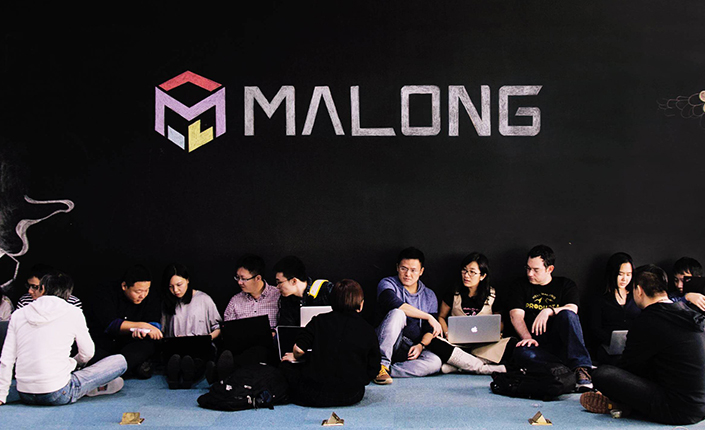China’s AI trajectory is set by entrepreneurs and international collaboration, not by government edict


What is driving China’s current boom in artificial intelligence research? Many Western analyses inaccurately attribute China’s AI growth to the 2017 National AI Development Plan (AIDP), but Paul Triolo and Matt Scott argue that the real story is that the private sector has led and international collaboration has been crucial.
This is a summary of a longer paper that Paul Triolo prepared for a conference at the University of California at San Diego (UCSD) entitled “China’s Industrial Policy” on April 5–6 2019. The full version of the paper will be published as part of a volume on the conference proceedings in the coming months.
China is in the midst of a boom in the application of artificial intelligence. There is no doubt about that. But how has this developed and where is the driving force for AI development coming from? Many conventional Western analyses of China’s AI sector tend to focus on the National AI Development Plan (AIDP) released in July 2017, and highlight the government’s role and priorities for AI development, including for applications in surveillance and security, and the potential applications for military operations and command and control. Most of these rehashes of the meme that the government is in the driver’s seat on AI in China fail to address the vibrant role of the private sector in China, the role of foreign and domestic venture capital, and the overwhelming evidence that the Chinese government is supporting rather than leading the AI charge in China. For a more balanced view of the AIDP, see here.
We believe there is a more interesting story left untold.
AI development in China has been driven by its entrepreneurs, not by government edict. The public sector work in China is being driven by the private sector, both large, medium, and small AI companies, engaged in world-class AI technical R&D and applications. Beijing and its industrial ministries then subsequently began to establish policy mechanisms designed to assist the country’s largely homegrown AI community. China’s AI community has emerged over several years from several different directions. Many of the leading startups were birthed and nurtured by large multinational corporations’ China research labs. Others have grown from leading academies like Tsinghua University or have spun off from established Chinese technology leaders. Whatever their roots, these startups immediately embedded themselves into the global AI community with its norms of openness and collaboration.
Supporting evidence for this view can be found by just looking at details about leading Chinese AI companies outside the big platform players such as Alibaba, Tencent, and Baidu that have, over time, morphed into leading AI companies through leveraging their core business operations and access to huge data sets. Leading medium-sized dedicated AI companies, including SenseTime, Megvii, Yitu, and Malong Technologies, were all started and already thriving years before Chinese government ministries such as the Ministry of Industry and Information Technology and the Ministry of Science and Technology, lead drafters of the AIDP, got involved with constructing a supporting policy framework. The founding dates of these companies are all on or before 2014, and their technical achievements — including research, competitions, and patents — are all on record well before the government’s AI-related policies began to gather real steam after the 2017 release of the AIDP (for details of technical achievements, competition, patents for SenseTime and other companies, see here).
All the software engineering personnel involved in the industry have excellent career options, and are largely English-speaking — they all participate actively in the international AI research community, where English is the lingua franca. This creates a tough competitive situation for even the largest AI players in China, and there are fierce recruiting wars over the top students coming out of the country’s top and second-tier universities. Those top recruits, along with the world’s elite computer scientists, need conditions that are “just right” for world-class research and technology to thrive in China — or wherever they work in the world — and produce real outcomes. Elite talent will quickly sense any negative changes to the system and will resist going in directions that are not market- and industry-driven. They prize their independence and risk-taking abilities and want to do everything they can to remain competitive and be the best in their particular AI niche. Talented software engineers with AI chops are looking to work under Chinese AI leaders at up-and-coming startups. So far, a supportive environment for AI has led to the sprouting of a huge number of startups in China, currently more than 1,000. This is because leading AI-focused software engineers are striking out on their own, hoping to create new algorithms and applications, drive innovation, and challenge the status quo.
Importantly, the dynamic is that companies lead, and then the government supports their growth. Without government support, Chinese AI companies would continue to exist, and the best of them would continue to be world-class and growing
Looking at the broad landscape of AI-focused companies, several factors stand out. First, the businesses of China are driving AI adoption, heavily focused on their business models and achieving real results by leveraging deep learning algorithms. Importantly, the dynamic is that companies lead, and then the government supports their growth. Without government support, AI companies would continue to exist, and the best of them would continue to be world-class and growing — this is demonstrated by the fact that the older AI focused companies were doing well before the government became more involved via the AIDP. And although the government itself is a customer of some of the AI companies in terms of security applications, it’s not the only business model out there — for example, Chinese companies like Malong are doing just fine in the smart retail sector, leveraging AI in areas such as product recognition. So what the West has to contend with is a realization that China’s AI ambitions are actually the ambitions of its citizens, and its private sector businesses, and is much more organic, and more bottom up, than most Western writings on China’s AI sector and ambitions depict.
Second, fixating on a so-called “arms race” between China and the U.S. in AI generates a false meme, which overlooks the degree to which companies and individuals in the AI space are collaborating across borders and domains, to the benefit of the overall global AI ecosystem, still very much in its infancy. The focus on still very notional and aspirational AI applications in the military domain and nation-state competition is a limited and inaccurate lens to use to assess an industry that is fueled by the efforts of what is unarguably an international and inseparable AI research community collaborating to push forward innovation. That said, competition itself is a great thing — but this is happening at the company level, not at the nation-state level, and is largely over talent. Highlighting this, MacroPolo recently highlighted the degree to which the U.S. AI talent market is dependent on China (see here). The current trend appears to be toward more U.S. visa restrictions on Chinese STEM students and researchers, coupled with other restrictions on investment and export controls related to AI-associated technologies. While it remains unclear whether these trends will lead to another AI winter, at a minimum, they will have a chilling effect on a key technological domain at a critical moment in its development.
The full text of this article will be available in the coming months.






